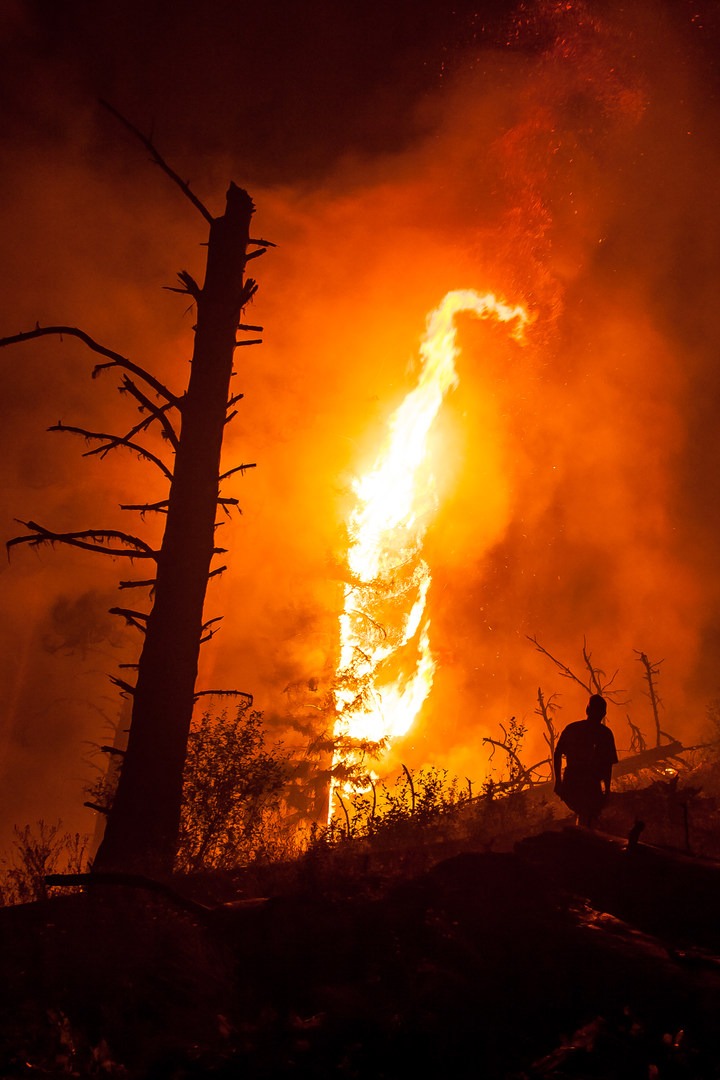You are here
Wildfire season is here.
Poor air quality that limits athletic activity, the devastation of the places where we play, the release of climate change-causing carbons into our atmosphere, the economic impact on rural communities… these terrifying consequences are just some of the negative effects of forest fires.
Unfortunately, wildfires are only just increasing in severity, size and duration. The average wildfire is now five times as severe as it would have been in the 1970s. Just about 20 years ago, the United States Forest Service, which is one of the primary agencies bearing the financial burden of fighting these fires, used only 16 percent of its annual budget dealing with wildfire. 2015 was the first summer where over half the USFS annual funds for all of its programs, which cover prevention as well as suppression efforts, were needed to combat the extreme fire season.
The price to fight these fires is steep and is expected to increase to nearly $1.8 billion by 2025. Each year, the USFS and the BLM have to devote more and more resources to fighting fires. This means other important work, including the restoration and prevention programs that reduce the threat of wildfire, gets pushed to the wayside.
Unfortunately, with President Trump’s proposed budget cuts to the USFS and other land management programs, it’s likely this downward spiral will just worsen.
With the wet and snowy winter that the West saw in 2016 and 2017, it’s likely that we won’t see the same catastrophic conditions for fire that were present during recent drought years. You can read more detail about the 2017 fire season here, including how it is predicted to effect your area.
The worst thing to do it to get complacent, however. Most wildfires are caused by careless humans. It’s important to know what current wildfire conditions are throughout the drier months before heading out for any outdoor recreation.
Remember Smokey the Bear? It’s true what he said about forest fires - "Only you can prevent wildfires."
Here are a few takeaways we hope you remember on your trips and adventures this summer:
Wildfire Prevention
What can you do to prevent fires?
- Research burn conditions.
- Do your best to avoid building campfires, even in existing pits.
- Get a permit if you plan to build any campfires in the backcountry or even when car camping.
- Never leave a fire unattended.
- When you extinguish a fire, douse it and stir it until ashes are cold and all coals are out.
Learn more about being campfire concious - including campfire safety, etiquette, and other best practices.
Wildfire Reaction
What should you do if you see a fire?
- Call 911. (Try even if you don’t have service. This call can often go through when nothing else can.)
- Call the local land management agency, such as the Forest Service.
- Evacuate before you feel threatened.
What about if you see one out in the wild?
- Don’t outrun the blaze, look for water or an area with little vegetation. You will also be safer in an area already that has already been burned if you can get to it.
- Cover your mouth and body with a wet cloth.
- Get low to the ground. Asphyxiation is a much greater concern than burns.
What should you do after a fire?
- Think twice about recreating in a burned area.
- Watch out for hazardous trees that might topple over.
- Be prepared and on the look out for flash flooding and severe mudslides, as these are serious concerns.
- Be aware that the air quality will be poor, and evacuation of the area is recommended.





Comments
And a side note on wildfire- cute ol' Smokey has been an icon for more damage than benefit really, because suppressing ALL fires everywhere has lead to the build up of fuels in ecosystems that naturally burn regularly. They need frequent fires to keep burns at lower intensity and not be so damaging. Keeping all fire out allows huge fuel build up so we get massive hugely damaging fires that kill everything rather than slowly creeping just in the underbrush and refreshing the ecosystem. It's not until the 1980's the royal "we" have started to change the policy and do careful and controlled "prescribed" burns in efforts to repair the natural fire regimes, reduce fuels, and in the end protect everyone from these big dangerous unpredictable fires. Fighting fire with fire, yes.
So promote the local ecology agencies who are trying to make these changes (when they aren't spending all their budget on fighting the wildfires), and of course as regular citizens be extremely careful with and around fire (and recent burns) and in these fuel-filled ecosystems. And leave the cigarette butts in the car!
Thanks for the very relevant article!
Sign In and share them.